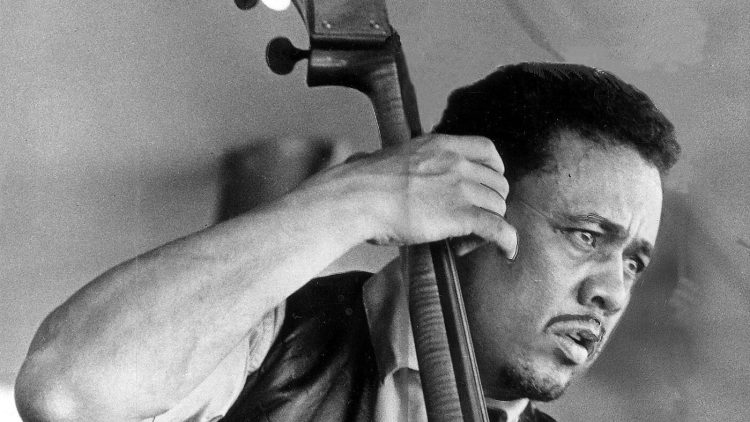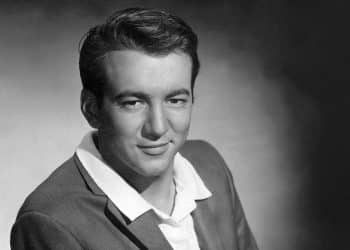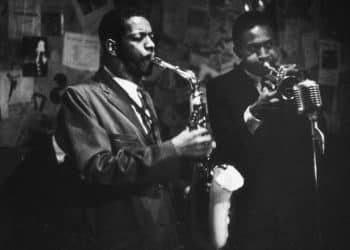Charles Mingus was a legendary American jazz bassist, composer, and bandleader known for his innovative and eclectic approach to music. Mingus was a prolific artist, creating a vast and diverse body of work over his career, and his music continues to inspire and influence musicians around the world.
His music was known for its complexity, incorporating elements of bebop, free jazz, swing, and classical music, as well as his distinctive use of the bass as a lead instrument. Mingus was also known for his political activism, and his music often reflected his views on race, society, and politics.
In this list of the 10 best Charles Mingus songs of all time, we will explore some of his most iconic and influential works, spanning his entire career and showcasing the many facets of his musical genius.
1. Goodbye Pork Pie Hat
“Goodbye Pork Pie Hat” is a soulful and introspective instrumental piece composed by Charles Mingus. The song is a tribute to the legendary jazz saxophonist Lester Young, who was known for his trademark pork pie hat. Mingus’s mournful and expressive bass playing on this track is complemented by the mournful saxophone solo played by Shafi Hadi, which evokes the melancholy of the song’s subject matter. The song has become a jazz standard and has been covered by numerous artists over the years.
2. Moanin’
“Moanin'” is a jazz standard composed by pianist Bobby Timmons, but it is most famously known for Charles Mingus’ version. Released in 1959 on his album “Blues & Roots”, the song features a captivating melody with a memorable opening riff and a hard-driving swing beat. Mingus’ arrangement is characterized by his powerful bass lines and dynamic shifts in tempo, which give the song a raw and improvisational feel. The song also features impressive solos from saxophonist John Handy and trumpeter Booker Ervin, showcasing their virtuosity and ability to navigate the song’s intricate harmonies.
3. Haitian Fight Song
“Haitian Fight Song” is a jazz composition by Charles Mingus that was recorded in 1957. This powerful and dynamic piece is a tribute to the struggle of the Haitian people and features driving rhythms, angular melodies, and explosive solos. Mingus, who was deeply involved in the civil rights movement, composed this song as a call for solidarity and resistance against oppression. The track is notable for its intense energy and sense of urgency, with each member of the ensemble contributing to a fiery and electrifying performance.
4. Better Git It in Your Soul
“Better Git It in Your Soul” is a lively jazz composition by Charles Mingus that features a groovy, bluesy bassline and catchy horn riffs. The song is full of energy, with dynamic shifts and strong solos from each instrument. Mingus wrote the song as a tribute to his friend, blues musician Bubber Miley, and it showcases his ability to blend different genres and styles of music. The song features call-and-response sections, as well as a gospel-influenced chorus that urges listeners to “git up and dance” and “feel the spirit.
5. Fables of Faubus
“Fables of Faubus” is a politically charged composition by Charles Mingus, written in response to the actions of Arkansas Governor Orval Faubus during the Little Rock Nine crisis in 1957. The song features an insistent, driving bassline and saxophone solos that seem to mirror the anger and frustration felt by Mingus and others at the time. The song’s original lyrics were deemed too controversial for recording, so Mingus instead recorded a version with scat vocals in place of the lyrics
6. Boogie Stop Shuffle
“Boogie Stop Shuffle” is a jazz composition by Charles Mingus from his 1959 album “Mingus Ah Um”. The song features a driving rhythm section that’s anchored by Mingus’ double bass, along with a lively melody played by saxophones and trumpet. The title refers to the stop-start structure of the piece, which alternates between swinging passages and abrupt stops. The track also features a memorable solo by saxophonist John Handy, who trades licks with pianist Horace Parlan.
7. Bird Calls
“Bird Calls” is a bebop-inspired instrumental jazz piece composed by Charles Mingus. The song features complex, fast-paced melodies that mimic the sounds of various birds, with the musicians taking turns to create different “calls” with their instruments. Mingus’ bass playing is particularly notable in this song, as he incorporates intricate runs and rhythmic patterns that drive the piece forward. “Bird Calls” showcases Mingus’ skill as a composer and bandleader, as he directs his musicians to play together in a tight and cohesive manner while still allowing for individual expression.
8. Jelly Roll
“Jelly Roll” is a jazz composition by Charles Mingus from his 1963 album “Mingus Plays Piano”. The song is a tribute to the legendary jazz pianist and composer Jelly Roll Morton. The composition begins with Mingus playing a simple, bluesy melody on the piano, which is then joined by bass and drums. The melody then morphs into a lively, upbeat swing with improvisational solos from all three instruments. Mingus’ virtuosic bass playing is particularly noteworthy, with intricate, fast-paced lines that showcase his technical prowess. The song also features Mingus’ signature use of dissonance, creating tension and release throughout the piece.
9. Wednesday Night Prayer Meeting
“Wednesday Night Prayer Meeting” is a lively and energetic jazz composition by the legendary bassist and bandleader Charles Mingus. Originally recorded in 1959, the song is characterized by its driving rhythm and gospel-inspired melodies and harmonies. The song features spirited solos by members of Mingus’ band, including a fiery saxophone solo by John Handy and a soulful piano solo by Horace Parlan. Mingus’ distinctive bass playing anchors the ensemble, driving the song forward with propulsive energy.
10. Pithecanthropus Erectus
“Pithecanthropus Erectus” is a seminal jazz composition by Charles Mingus, released in 1956 as the title track of an album. The song is known for its adventurous, episodic structure, featuring a series of different themes and moods that are seamlessly woven together by Mingus and his band. The piece is notable for its evocative title, which refers to the scientific name for an extinct species of human ancestor, and its complex harmonic and rhythmic structure, which pushes the boundaries of traditional jazz. Mingus’ use of dissonance, angular melodies, and shifting time signatures give the song a tense, dramatic quality that reflects the album’s overall themes of social and political upheaval.








